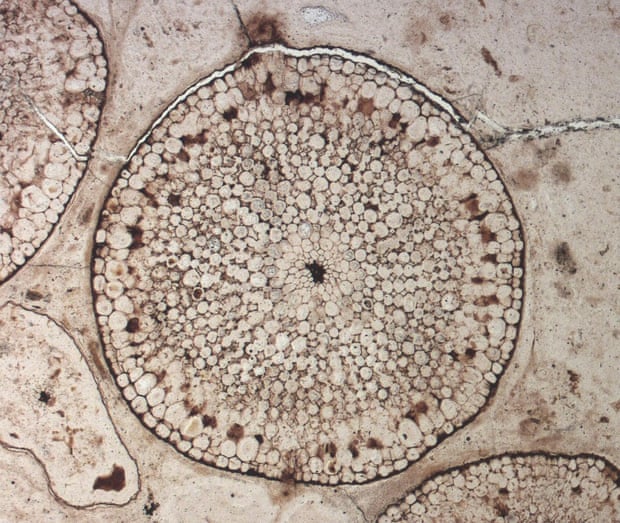Rhynie Chert 100 years old (+410Ma)!
The first publication on the Rhynie Chert was published 100 years ago.
(Kidston, R. & Lang, W. H. 1917. On Old Red Sandstone plants showing structure, from the Rhynie chert bed, Aberdeenshire. Part I. Rhynia gwynne-vaughani Kidston & Lang. Transactions of the Royal Society of Edinburgh, 51(24): 761- 784.)
Although there were mentions in 1913:-
(Mackie, W. 1913. The Rock series of Craigbeg and Ord Hill, Rhynie, Aberdeenshire. Transactions of the Edinburgh Geological Society, 10: 205-236.)
(Newlands, M. A. 1913. Note on a fossil plant from the Old Red Sandstone, Rhynie, Aberdeenshire. Transactions of the Edinburgh Geological Society, 10 (Session 78, 1911-12): 237.)
Earlier this year the Royal Society held a meeting to share the present knowledge and there is a very good report in the Guardian about this. The comments after the report are interesting; some are entertaining.
The Rhynie chert is renowned for the exquisite preservation of the plants and animals within it. This despite its great age - Pragian, Early Devonian, formed about 410 million years ago. The preservation is thought to be due to it being close to silica rich hot springs similar to present day Yellowstone.
 |
| Transverse section of a stem of Rhynia. Photograph: Paul Kenrick |
No comments:
Post a Comment